Amidst the vast array of bird species, some stand out with their strikingly vibrant and eye-catching red legs. These colorful appendages add a touch of charm and intrigue to their overall appearance. From wading birds to ground-dwelling species, these birds exhibit a variety of behaviors, habitats, and adaptations. Join us on this journey as we delve into the fascinating world of avian diversity and discover the birds with red legs that grace our skies, shores, and woodlands. Prepare to be amazed by their beauty, learn about their ecological roles, and unravel the mysteries behind their distinctive crimson limbs. Let’s embark on this vibrant exploration of birds with red legs!
List of Birds With Red Legs
Black-necked Stork
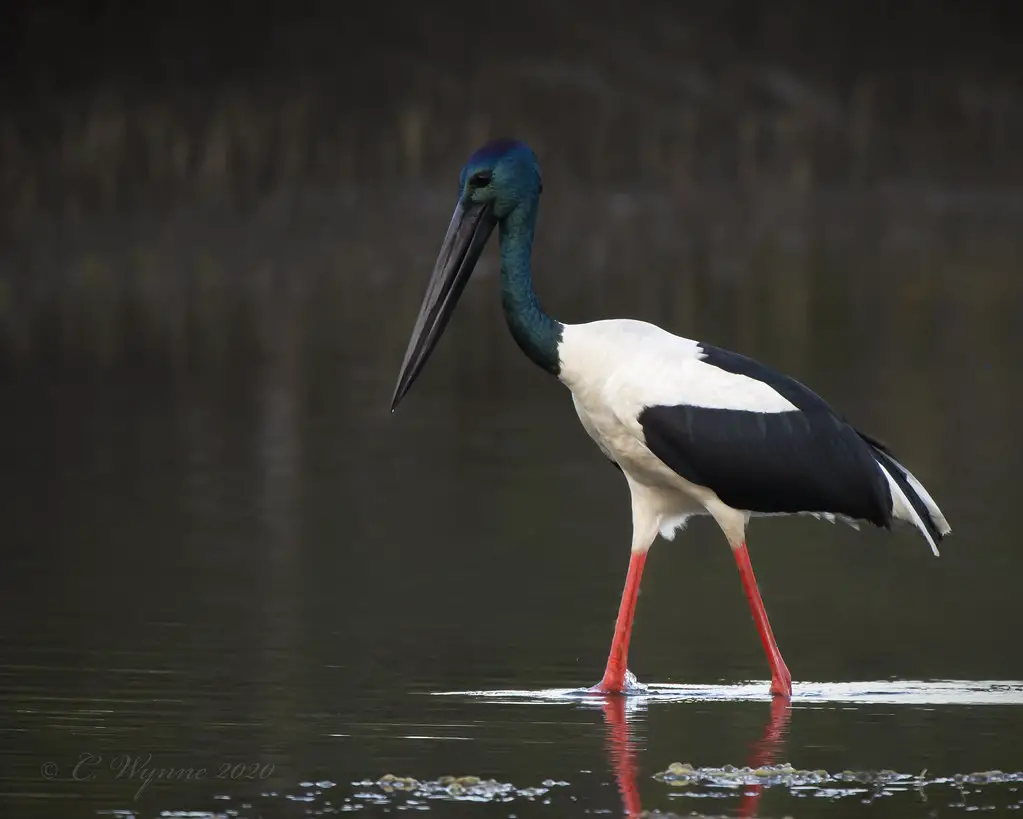
Image Source
- Scientific name: Ephippiorhynchus asiaticus
- Lifespan: Up to 20 years
- Size: 129-150 centimeters (51-59 inches)
- Weight: 4-7 kilograms (8.8-15.4 pounds)
- Origin: South and Southeast Asia, Australia
The Black-necked Stork is a magnificent bird species that commands attention with its impressive presence. Standing tall at around 4 feet (1.2 meters) with a wingspan of up to 7 feet (2.1 meters), this striking avian is characterized by its black and white plumage, long black neck, and, as the name suggests, a vibrant red to pink coloration on its legs. Found in wetlands and freshwater habitats across parts of Asia, Australia, and New Guinea, the Black-necked Stork is an adept hunter, preying on fish, crustaceans, amphibians, and even small mammals. Its red legs not only add a touch of elegance to its appearance but also serve as a visual cue of its presence in its natural habitat. Observing a Black-necked Stork in action is an awe-inspiring experience, as it gracefully moves through the water, using its long bill to snatch its prey.
Red-Footed Booby:

Image Source
- Scientific name: Sula sula
- Lifespan: 15-20 years
- Size: 70-85 centimeters (28-33 inches)
- Origin: Tropical and subtropical regions worldwide
The Red-Footed Booby is a remarkable seabird known for its striking red legs. It boasts a white body with black-tipped wings and a pale blue beak, making it a visually captivating species. These birds are predominantly found in tropical and subtropical regions, where they nest in large colonies on remote islands. Red-Footed Boobies are skilled divers, plunging from impressive heights into the water to catch their preferred diet of fish and squid. Their bright red legs, in contrast to their white plumage, make them easily distinguishable and add to their unique allure.
Black Guillemot:

Image Source
- Scientific name: Cepphus grylle
- Lifespan: 10-15 years
- Size: 31-38 centimeters (12-15 inches)
- Origin: Arctic and Subarctic coastal regions
The Black Guillemot is a seabird that features eye-catching red legs. It has a black plumage with a distinctive white patch on its wings, creating a striking contrast. These birds are commonly found in northern coastal areas, where they nest in rocky crevices and cliffs. Black Guillemots are strong divers, using their wings to propel themselves underwater in pursuit of small fish and crustaceans. Their red legs, which stand out against their dark feathers, are believed to be an important feature during courtship displays. The red legs of the Black Guillemot add a vibrant touch to its overall appearance, making it an intriguing bird to observe in its natural habitat.
Sarus Crane

Image Source
- Scientific name: Antigone antigone
- Lifespan: Up to 40 years
- Size: 152-176 centimeters (60-69 inches)
- Weight: 6-12 kilograms (13-26 pounds)
- Origin: South Asia and Southeast Asia
The Sarus Crane is the tallest flying bird and has a unique appearance. It has a gray body with a bright red head and upper neck, making it easily recognizable. This crane is found in wetlands and grasslands, where it feeds on insects, small vertebrates, and plant matter. Its distinctive trumpeting call is often heard during courtship displays.
Pigeon Guillemot:
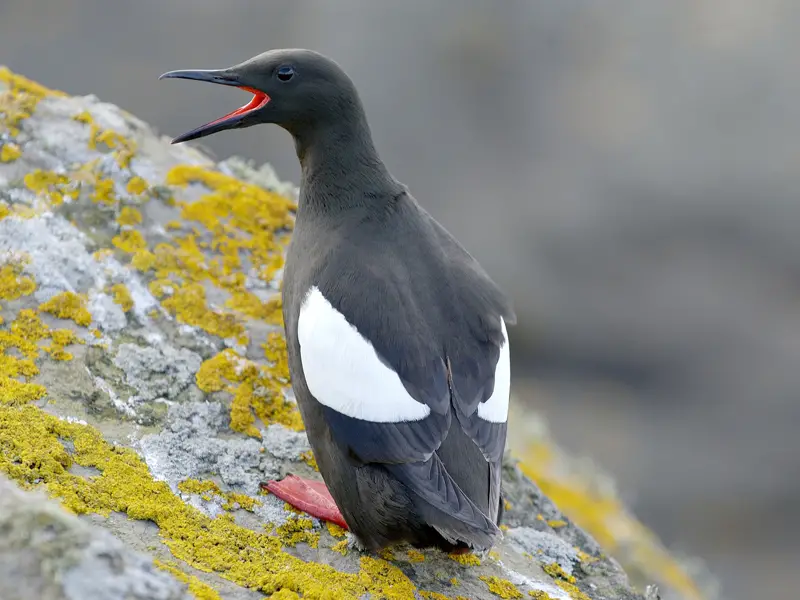
Image Source
- Scientific name: Cepphus columba
- Lifespan: 10-15 years
- Size: 34-40 centimeters (13-16 inches)
- Origin: North Pacific coastal regions
The Pigeon Guillemot is a charming seabird that stands out with its red legs. With a sleek black body and distinct white patches on its wings, it has an unmistakable appearance. These birds are well-adapted to coastal habitats and are often found in rocky areas near the ocean. They are excellent divers, using their wings to propel themselves underwater in search of small fish and invertebrates. The vibrant red legs of the Pigeon Guillemot not only contribute to its visual appeal but also provide a striking contrast against its black and white plumage.
Pied Plover:

Image Source
- Scientific name: Hoploxypterus cayanus
- Lifespan: Up to 15 years
- Size: 17-20 centimeters (6.7-7.9 inches)
- Weight: 70-80 grams (2.5-2.8 ounces)
- Origin: South America
The Pied Plover (Vanellus cayanus), also known as the Pied Lapwing, is a striking bird species found in parts of South America, particularly in the wetlands and grasslands of the Amazon Basin. It is known for its black and white plumage, with a distinctive pattern of contrasting colors on its wings, head, and chest. The Pied Plover feeds on a variety of invertebrates, such as insects, worms, and small crustaceans, found in the muddy or sandy areas where it resides. It is often observed running along the ground, pausing to probe the soil for prey. The Pied Plover’s graceful movements and striking appearance make it a captivating sight in its natural habitat.
Snow Goose

Image Source
- Scientific name: Anser caerulescens
- Lifespan: 15 years
- Size: 29 to 31 inches
- Native to: Greenland, Canada, Alaska, and the northeastern tip of Siberia, and spend winters in warm parts of North America
The Snow Goose, also known as the Blue Goose, is a medium-sized waterfowl species native to North America. These geese are known for their striking appearance, with white plumage and black wingtips that are visible during flight. They get their name from their tendency to breed in the Arctic regions and migrate southward in large flocks, creating a spectacle in the skies. Snow Geese feed primarily on plant matter, including grasses, sedges, and grains, and are often seen grazing in fields or wetlands. During the breeding season, they build nests in the Arctic tundra, where they raise their young. Snow Geese are highly vocal birds, with a range of calls that can be heard across their habitats. They are cherished for their role in North America’s wildlife and are a sight to behold during their annual migrations.

Image Source
- Scientific name: Platalea ajaja
- Lifespan: 10-15 years
- Size: 71-86 centimeters (28-34 inches)
- Origin: Americas (North, Central, and South)
Spix’s Guan: Spix’s Guan is a unique bird native to the Amazon rainforest in Brazil. With its distinct appearance, this species stands out with its dark plumage and beautiful blue facial skin. The Spix’s Guan is a medium-sized bird known for its strong beak and agile movements through the forest canopy. It primarily feeds on fruits, seeds, and small invertebrates. This guan species is often found in small groups, foraging and vocalizing together, adding a lively atmosphere to the jungle. Unfortunately, the Spix’s Guan is critically endangered due to habitat loss and hunting, making sightings of this remarkable bird increasingly rare.
Roseate Spoonbill

- Scientific name: Platalea ajaja
- Lifespan: 10 years
- Size: 24 inches
- Native to: southern Florida, coastal Texas, and southwestern Louisiana
- Beaks typically measure 4-6 inches (10-15 cm) in length.
The Roseate Spoonbill is a magnificent wading bird known for its vibrant pink plumage and distinctively shaped bill. In addition to its stunning appearance, this bird also boasts bright red legs. With a wingspan of up to 5 feet, the Roseate Spoonbill is a graceful flier, often seen gliding over wetlands and marshes. It feeds by sweeping its specialized spoon-shaped bill through the water, capturing small fish, crustaceans, and insects. The combination of its rosy plumage and striking red legs makes the Roseate Spoonbill a true spectacle in wetland habitats, and its presence is a delight for birdwatchers and nature enthusiasts.
White Ibis

Image Source
- Scientific name: Eudocimus albus
- Lifespan: 25 to 27 years
- Size: 21 to 28 inches
- Native to: Virginia via the Gulf Coast of the United States
The American White Ibis is a striking wading bird that showcases elegant white plumage and eye-catching red legs. With a curved bill and a long neck, it forages in wetlands and shallow waters, probing the mud for insects, small fish, and crustaceans. The American White Ibis often gathers in large flocks, creating a beautiful sight as they gracefully navigate their surroundings. Its vivid red legs provide a vibrant contrast against its snowy white feathers, making it easily recognizable. Whether wading through marshes or taking to the sky, the American White Ibis with its red legs is a remarkable species that adds beauty to the wetland ecosystems it calls home.
Scarlet ibis

- Scientific name: Eudocimus ruber
- Lifespan: 16 years
- Size: 22 to 30 inches
- Native to: Northern South America southward along the coast of Brazil
: The Scarlet Ibis is a stunning bird renowned for its vibrant scarlet plumage and eye-catching red legs. Found in the wetlands and coastal areas of South America, this medium-sized wading bird is a sight to behold. Its long, curved bill is used to probe the mud and shallow waters in search of crustaceans and small aquatic creatures. The deep red color of its legs complements its striking crimson feathers, creating a captivating display. During the breeding season, the Scarlet Ibis forms large colonies, adding to the spectacle of their presence. Their red legs serve not only as a visual treat but also as a functional adaptation, allowing them to navigate muddy and marshy environments with ease.
Egyptian Goose

Image Source
- Scientific name: Alopochen aegyptiaca
- Lifespan: 10-15 years
- Size: 63-73 centimeters (25-29 inches)
- Origin: Africa, Europe, and Asia
The Egyptian Goose is a striking waterbird known for its attractive plumage and distinctive red legs. Native to Africa, this medium-sized goose has a bold and eye-catching appearance. Its plumage features a combination of brown, gray, and white, with intricate patterns and markings. The vibrant red legs of the Egyptian Goose provide a striking contrast against its feathers, enhancing its overall allure. These birds are often found near freshwater habitats, including lakes, rivers, and wetlands. They are known for their honking calls and their adaptability to various environments. With their characteristic red legs, the Egyptian Goose stands out among other waterfowl, adding a touch of color to the landscapes they inhabit.
Chukar:

Image Source
- Scientific name: Alectoris chukar
- Lifespan: 5-7 years
- Size: 32-35 centimeters (13-14 inches)
- Origin: Eurasia, Asia
The Chukar is a game bird native to parts of Europe and Asia, known for its distinctive appearance and red legs. These medium-sized birds have plump bodies, brown and gray feathers, and a bold facial pattern. While the Chukar’s plumage may be more subtle compared to other birds, its bright red legs provide a vibrant splash of color. Their legs are adapted for traversing rocky terrains and arid habitats, as they are agile climbers and runners. Chukars are often found in hilly and mountainous regions, where they feed on seeds, berries, and insects. The combination of their reddish legs and their unique call, a characteristic “chukar-chukar,” makes them a memorable sight and sound in their natural habitats.
Red-Footed Falcon:

Image Source
- Scientific name: Falco vespertinus
- Lifespan: 6-8 years
- Size: 28-33 centimeters (11-13 inches)
- Origin: Europe, Asia, and Africa
The Red-Footed Falcon is a captivating bird with distinct red legs that contribute to its unique appearance. These small falcons have a sleek body and a striking coloration, with a grayish-brown upper body, white underparts, and a pale face. They are primarily found in open grasslands and savannahs, where they hunt for insects, small birds, and rodents. Red-Footed Falcons are known for their agile flight, effortlessly soaring through the air with their long, pointed wings. The vibrant red legs of this falcon are an intriguing feature that sets it apart from other falcon species, adding a splash of color to its overall elegance.
Black-Headed Gull:

Image Source
- Scientific name: Chroicocephalus ridibundus
- Lifespan: 5-10 years
- Size: 38-44 centimeters (15-17 inches)
- Origin: Europe, Asia, and Africa
The Black-Headed Gull is a medium-sized gull species characterized by its black hood and bright red legs. Despite its name, the black hood is not always present and is actually more pronounced during the breeding season. Outside of the breeding season, the black hood fades, revealing a white head with dark spots. These gulls are commonly found in coastal areas and inland wetlands, where they feed on small fish, insects, and invertebrates. Their red legs add a vibrant touch to their appearance, contrasting with their white plumage. Black-Headed Gulls are known for their graceful flight and distinctive call, making them a familiar sight and sound along coastlines and near bodies of water.
Black-Necked Stilt:

Image Source
- Scientific name: Himantopus mexicanus
- Lifespan: 5-10 years
- Size: 36-41 centimeters (14-16 inches)
- Origin: North and South America
The Black-Necked Stilt is a striking shorebird known for its long, thin legs, which are bright red in color. With its black and white plumage, the vivid red legs create a captivating contrast. These stilts are found in wetlands, marshes, and coastal areas, where they use their long legs to wade through shallow waters in search of small aquatic prey, such as insects, crustaceans, and small fish. Their slender legs and agile movements make them well-adapted to foraging in these habitats. The bright red legs not only serve as a visual spectacle but also play a functional role in their feeding behavior. The Black-Necked Stilt’s distinct appearance and elegant demeanor make it a favorite among birdwatchers and nature enthusiasts.
Bonaparte’s Gull:

Image Source
- Scientific name: Chroicocephalus philadelphia
- Lifespan: 10-15 years
- Size: 28-34 centimeters (11-13 inches)
- Origin: North America
Bonaparte’s Gull is a graceful and slender gull species that exhibits unique plumage during different seasons. During breeding season, the adults display a black hood, white body, and striking red legs. The combination of the black hood and red legs creates a captivating contrast against their white plumage. Outside of the breeding season, the black hood fades to a smudgy gray, and the red legs remain a prominent feature. These gulls are primarily found near bodies of water, such as lakes, rivers, and coastal areas. They feed on small fish, insects, and aquatic invertebrates. With their distinctive appearance and agile flight, Bonaparte’s Gulls are a delight to observe, especially when their red legs stand out against the backdrop of the water and sky.
Red-Legged Kittiwake:

Image Source
- Scientific name: Rissa brevirostris
- Lifespan: 10-15 years
- Size: 37-41 centimeters (15-16 inches)
- Origin: North Pacific coastal regions
The Red-Legged Kittiwake is a seabird species closely related to the more familiar Black-Legged Kittiwake. As its name suggests, one of its distinguishing features is its bright red legs. These striking red legs contrast with its predominantly white plumage, making it easily recognizable. Red-Legged Kittiwakes are found in the northern regions of the Atlantic Ocean, where they nest on steep cliffs and rocky ledges. They are skilled fliers, capable of soaring and gliding effortlessly over the ocean surface. These birds primarily feed on small fish and invertebrates, which they catch by diving into the water from the air. The vibrant red legs add a splash of color to their appearance, making them a captivating sight along coastal areas and during their graceful flights.
Snail Kite:

Image Source
- Scientific name: Rostrhamus sociabilis
- Lifespan: 7-10 years
- Size: 38-48 centimeters (15-19 inches)
- Origin: Americas (Florida, Caribbean, and Central and South America)
The Snail Kite is a unique bird of prey known for its distinctive red legs. Found in wetland habitats, particularly in the Americas, this raptor has adapted to feed on a diet primarily composed of snails. Its specialized beak allows it to extract snails from their shells with precision. The red legs of the Snail Kite serve as a striking feature against its dark plumage, providing a visual contrast. These legs are strong and well-suited for gripping and perching vegetation and branches in their habitat. The Snail Kite is an impressive hunter, skillfully navigating through marshes and wetlands to capture its prey. Its red legs are not only functional but also add a touch of color to its overall appearance, making it a fascinating bird to observe in its natural environment.
White-Tipped Dove:

Image Source
- Scientific name: Leptotila verreauxi
- Lifespan: 7-10 years
- Size: 23-30 centimeters (9-12 inches)
- Origin: Central and South America
The White-Tipped Dove is a medium-sized dove species known for its beautiful plumage and distinctive red legs. Its overall appearance is soft and elegant, with a light gray-brown body and a creamy white coloration on the tips of its feathers, giving it its name. The vibrant red legs provide a vivid contrast against the muted colors of its plumage. These doves are primarily found in wooded areas, forests, and scrublands, where they forage for seeds, fruits, and small insects on the ground. Their red legs are well-adapted for walking and scratching the forest floor in search of food. The White-Tipped Dove’s charming and peaceful nature, coupled with its unique red legs, make it a delightful addition to the avian world.
Guanay:

Image Source
- Scientific name: Hylocichla mustelina
- Lifespan: 5-8 years
- Size: 18-23 centimeters (7-9 inches)
- Origin: North America
The Guanay, also known as the Guanay Cormorant, is a species of seabird that belongs to the cormorant family. It is native to the coastal regions of Peru and Chile in South America. The Guanay is a medium-sized bird with blackish-brown plumage and a slender, curved bill. It has a distinctive white patch on its thighs, which becomes more prominent during the breeding season. These birds primarily feed on fish, diving underwater to catch their prey. Guanays are colonial nesters, and they build their nests on rocky cliffs or ledges. They often breed in large colonies, creating a cacophony of calls and exhibiting social behaviors. The Guanay population is highly dependent on the availability of fish, and they are considered an important indicator species for the health of coastal marine ecosystems.
Wood Thrush

- Scientific name: Hylocichla mustelina
- Lifespan: up to 8 years
- Size: 7 inches
- Native to: deciduous and mixed forests in the eastern U.S
The Wood Thrush is a beautiful songbird known for its melodious and flute-like song that echoes through forested areas. With its reddish-brown upperparts and creamy white underparts, the Wood Thrush displays a combination of warm and earthy colors. Its legs, though not brightly colored, are a pale pinkish-gray that complements its plumage. These slender legs are well-adapted for perching and hopping along branches as it searches for insects, fruits, and berries. Wood Thrushes prefer woodland habitats, where their enchanting song fills the air during the breeding season. Their distinctive leg color adds a subtle touch of elegance to their overall appearance, making them a captivating sight and sound in the forest.
Mourning Dove:
Image Source
- Scientific name: Zenaida macroura
- Lifespan: 2-5 years
- Size: 9-13 inches
- Native to: Southern Canada to central Mexico
The Mourning Dove is a familiar and widespread bird found throughout North America. With its soft gray-brown plumage and slender body, it exudes a sense of grace and tranquility. The legs of the Mourning Dove are a pale pinkish hue, providing a gentle contrast against its muted colors. These legs are sturdy and adapted for perching on wires, tree branches, and other elevated surfaces. Mourning Doves are known for their gentle cooing calls that fill the air in the early morning and evening hours. They feed on seeds and grains found on the ground, and their legs are well-suited for walking and foraging in open areas. The understated beauty of their pinkish legs adds a delicate touch to their overall appearance, making them a cherished and peaceful presence in many landscapes.
Common Starling

- Scientific Sturnus vulgaris
- Lifespan: 2 – 3 years
- Size: 8-inch
- Native to: Europe, Asia, and Africa, as well as northern Australia and the islands of the tropical Pacific.
The European Starling is a highly adaptable and intelligent bird that has been introduced to various parts of the world. With its glossy black plumage speckled with iridescent purple and green, it stands out in both urban and rural environments. Its legs are a dark pinkish-gray color, blending in with its overall dark coloration. These legs are strong and enable the European Starling to walk, hop, and probe the ground for food. Known for its vocal mimicry skills, the European Starling can imitate a wide range of sounds, including other bird songs and human-made noises. Its leg color may not be as vibrant as other species, but it serves as a functional and unobtrusive part of its anatomy, allowing this adaptable bird to thrive in various habitats.
Rock Pigeon:

Image Source
- Scientific name: Columba livia
- Lifespan: 6 years
- Size: 11-13 inches
- Native to: Europe to North Africa and India, it now lives in wild or semi-wild conditions in cities all over the world, including most of North America
: The Rock Pigeon, also known as the common pigeon or city pigeon, is a familiar sight in urban areas around the world. With its plump body, gray plumage, and iridescent neck feathers, it has adapted well to human environments. The legs of the Rock Pigeon are a vibrant reddish-pink color, adding a striking contrast to its overall appearance. These legs are well-suited for perching and walking on various surfaces, from rooftops to city streets. Rock Pigeons are known for their distinctive cooing calls and their ability to navigate and find their way back to their roosting sites. Their vibrant leg color adds a touch of liveliness to their otherwise subdued plumage, making them a common and charismatic urban bird.
Black-Bellied Whistling-Duck:

Image Source
- Scientific name: Dendrocygna autumnalis
- Lifespan: 5-10 years
- Size: 47-56 centimeters (18.5-22 inches)
- Origin: North and South America
The Black-Bellied Whistling-Duck is a unique and striking bird with its bold black and white plumage and long, pink legs. Found in wetland habitats, these ducks are known for their distinctive whistling calls that give them their name. Their legs, a vibrant shade of pink, are well-adapted for wading in shallow water as they search for aquatic plants, insects, and small invertebrates. With their slender and graceful legs, they move with elegance both on land and in water. Black-Bellied Whistling-Ducks are highly social birds, often forming large flocks during migration and breeding seasons. Their vibrant leg color adds a touch of vibrancy to their overall appearance, making them a visually striking and charismatic species.
Forster’s Tern

Image Source
- Scientific name: Sterna forsteri
- Lifespan: 10 Years
- Size: 13–14 in
- Native to: North America
The Forster’s Tern is a graceful seabird known for its buoyant flight and striking appearance. With its silvery-gray upperparts, white underparts, and deeply forked tail, it is a true marvel to behold. The legs of the Forster’s Tern are a delicate shade of pale pink, complementing its overall coloration. These long and slender legs are well-adapted for perching on branches, rocks, and other elevated surfaces, as well as for walking and wading in shallow waters. Forster’s Terns are highly skilled aerial hunters, swooping and diving to catch small fish near the water’s surface. Their leg color adds a subtle touch of elegance to their aerial acrobatics and their presence along coastlines and freshwater habitats.
Arctic Tern:

Image Source
- Scientific name: Sterna paradisaea
- Lifespan: 15-30 years
- Size: 28-39 centimeters (11-15 inches)
- Origin: Arctic regions (breeding) and worldwide migration
The Arctic Tern is a remarkable bird that embarks on one of the longest migrations of any animal, traveling from the Arctic to the Antarctic and back each year. With its slender body, white plumage, and distinctive black cap, it is a true emblem of the polar regions. The Arctic Tern’s legs, a pale shade of pink, are well-suited for perching on rocky cliffs and ice floes during their nesting season. These long and agile legs also enable them to forage for fish and other small prey in the ocean waters. Known for their graceful flight and piercing calls, Arctic Terns are a captivating sight as they traverse vast distances, showcasing the beauty and resilience of these incredible migratory birds.
Scarlet honeycreeper

Image Source
- Scientific name: Iridophanes pulcherrimus
- Life span: Up to 6 years
- Size: 11 cm (4.3 in)
- Weight: 10 g
- Origin: South America
The ʻIʻiwi is a striking Hawaiian bird known for its vibrant red plumage and curved bill. Endemic to the Hawaiian Islands, it is a symbol of the island’s unique biodiversity. The ʻIʻiwi’s legs, a pale shade of pink, are perfectly adapted for perching on branches and exploring the nectar-rich flowers of native Hawaiian plants. These slender legs enable the bird to navigate its forested habitats with agility and precision. The ʻIʻiwi’s leg color adds a touch of elegance to its overall appearance, accentuating the brilliant red feathers and contrasting with its black wings and tail. Sadly, the ʻIʻiwi faces numerous threats, including habitat loss and disease, highlighting the importance of conservation efforts to protect this remarkable Hawaiian species.
Little Gull:

Image Source
- Scientific name: Hydrocoloeus minutus
- Lifespan: 10-15 years
- Size: 25-30 centimeters (10-12 inches)
- Origin: Europe, Asia, and North America
The Little Gull is a petite and graceful seabird with a delicate appearance. With its pale gray plumage, black head, and dainty wings, it is a delightful sight along coastal areas and inland water bodies. The legs of the Little Gull, a pale shade of pink, are well-adapted for perching on rocks, jetties, and other elevated surfaces near water. These slender legs also aid in the bird’s agile and precise movements as it dives and skims the water’s surface in search of small fish and invertebrates. The leg color of the Little Gull adds a touch of subtlety to its overall coloration, accentuating its dainty and elegant nature. Though small in size, this gull species embodies the beauty and grace of these coastal avian inhabitants.
Final Thoughts on Birds With Red Legs
Birds with red legs are a captivating group of avian species that add a splash of vibrant color to the natural world. From the elegant Black-necked Stork with its long crimson legs to other remarkable birds such as the Red-legged Partridge, Redshank, and Red-legged Seriema, these species showcase the diversity and beauty found within the avian realm. The red legs serve not only as a visual spectacle but also play various roles in the birds’ lives, from attracting mates to signaling their presence in their habitats. These birds remind us of the remarkable adaptations and stunning aesthetics found in nature. Whether wading through wetlands, soaring through the sky, or striding across open fields, birds with red legs leave a lasting impression. So, next time you encounter one of these fascinating creatures, take a moment to appreciate their vibrant beauty and the wonders they bring to our natural world
Types of Birds With Red Legs
- Red-Footed Booby
- Black Guillemot
- Black-necked Stork
- Sarus Crane
- Pigeon Guillemot
- Red-Footed Falcon
- Roseate Spoonbill
- American White Ibis
- Scarlet Ibis
- Egyptian Goose
- Chukar
- Black-Headed Gull
- Black-Necked Stilt
- Bonaparte’s Gull
- Red-Legged Kittiwake
- Snail Kite
- White-Tipped Dove
- Wood Thrush
- Mourning Dove
- European Starling
- Rock Pigeon
- Black-Bellied Whistling-Duck
- Forster’s Tern
- Arctic Tern
- ʻIʻiwi
- Little Gull
- Red-Legged Honeycreeper


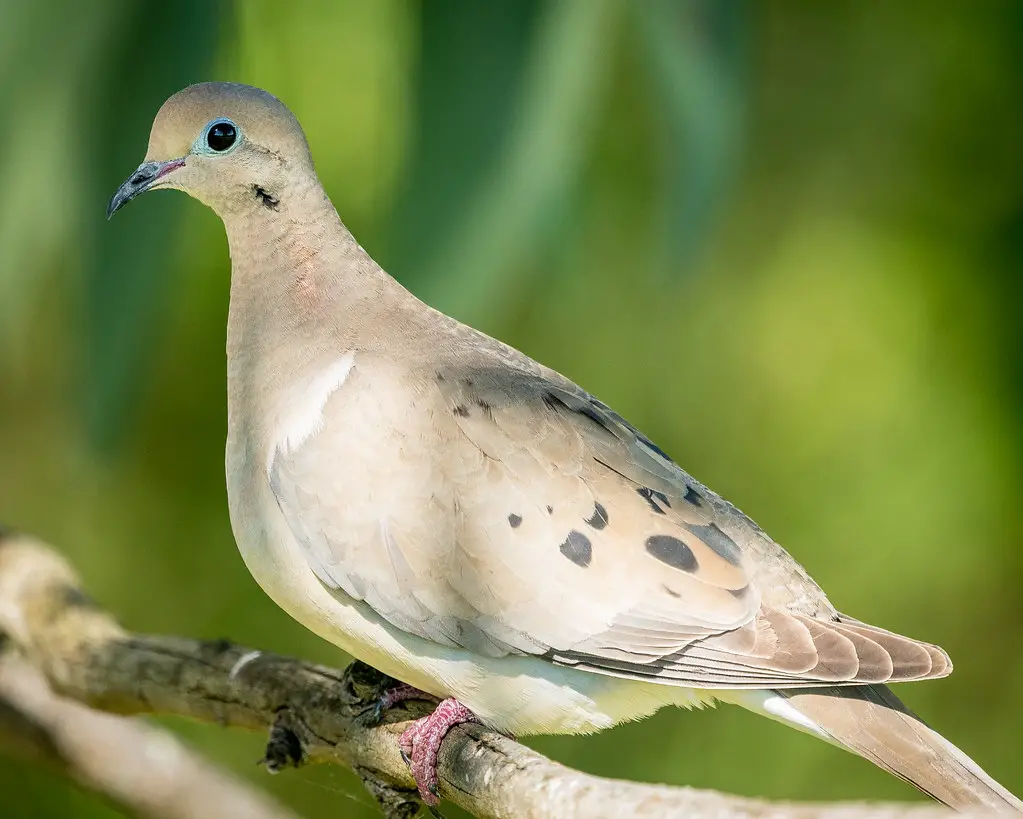
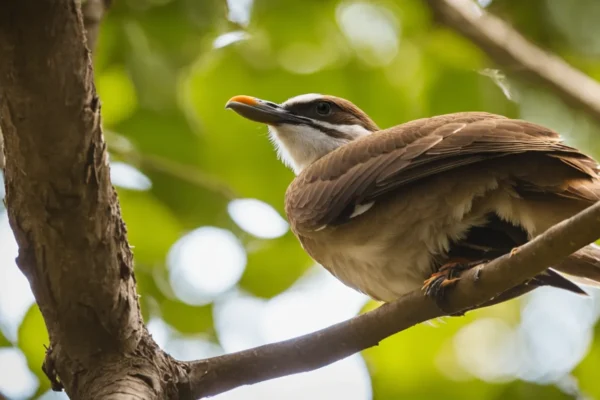
![35 Fascinating Birds with Long Necks [Images + IDs]](https://birdsology.com/wp-content/uploads/2023/05/9676018583_75e6521263_b-600x400.jpg)

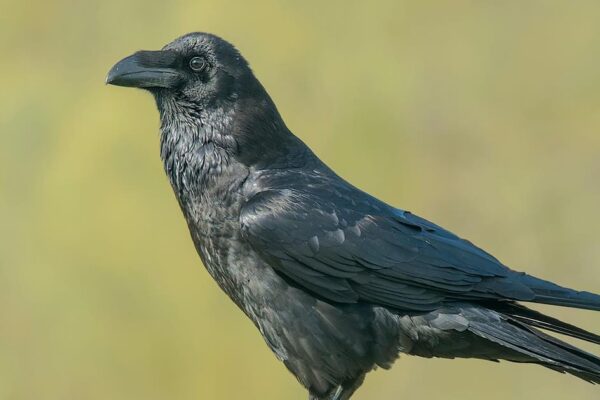

One thought on “30 Birds With Red Legs [Images + IDs]”